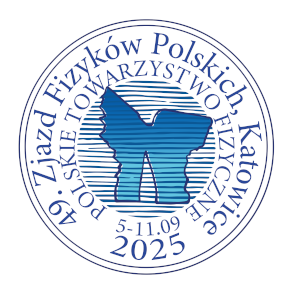Speaker
Description
Nanoparticles (NPs) , which emit light with an energy higher than that energy of the excitation radiation are gaining attention as a new generation of potential probes for many important applications in biomedicine.
The aim of the research was to design, develop the fabrication technology, characterize and apply Gd2O3: Er, Yb nanoparticles and hybrid core/shell NPs (Fe3O4/Gd2O3: Er, Yb, Mg, Nd) as luminescent markers in HeLa cancer cells. The NPs were synthesized using two different methods: high-energy ball milling with NaCl [1] and the homogeneous co-precipitation method [2]. The NPs were characterized using XRD, TEM, SEM, EDX, confocal microscopy and photoluminescence studies.
The first synthesis method produced separate, upconverting NPs emitting light in the first biological window (NIR-1), with red luminescence (664 nm) and a pure monoclinic crystal structure which guaranteed higher upconversion efficiency. XRD studies showed that the average size of the NPs decreased from 42 nm to 22 nm with increasing milling time.
The homogeneous co-precipitation method allowed for the preparation of Fe3O4 NPs (core) consisting of several 13 nm NPs. This technique is suitable to obtain large, high luminescence, paramagnetic nanoparticles. The core/shell NPs had sizes from 220 nm to 641 nm (depends on process parameters). In the core/shell NPs, the addition of Nd3+ quenches the luminescence. The magnetic response of the core/shell samples was paramagnetic. For Fe3O4/Gd2O3: 1% Er3+, 18% Yb3+, 2.5% Mg2+, 0.5% Nd3+, at 300 K, the magnetization value registered at ~ 40 kOe is ~ 5.3 emu·g−1. The NPs are non-toxic up to a concentration of 1000 μg·ml−1 and penetrate cells by the process of endocytosis which has been confirmed by confocal microscopy studies.
[1] I. Kamińska et al. “Influence of high energy ball milling on structural and optical properties of Gd2O3:1% Er3+, 18% Yb3+ nanoparticles supplemented with NaCl”. Ceramics International, 2025. https://doi.org/10.1016/j.ceramint.2025.03.272.
[2] I. Kamińska et al. “Hybrid upconverting/paramagnetic Fe3O4/Gd2O3: Er3+, Yb3+, Mg2+, Nd3+ nanoparticles – synthesis, characterization and biological applications” Opto-Electronics Review 32, 2024, e150182. https://doi.org/10.24425/opelre.2024.150182.
Acknowledgements
This study was supported by the National Centre for Research and Development, Poland, Research Project No POIR.01.01.01-00-0832/19-00. The research was funded by the Miniatura project of the National Science Centre (DEC-2022/06/X/ST5/00026). This research was partially supported by the "MagTop" project (FENG.02.01-IP.05-0028/23) carried out within the "International Research Agendas" programme of the Foundation for Polish Science co-financed by the European Union under the European Funds for Smart Economy 2021-2027 (FENG).

